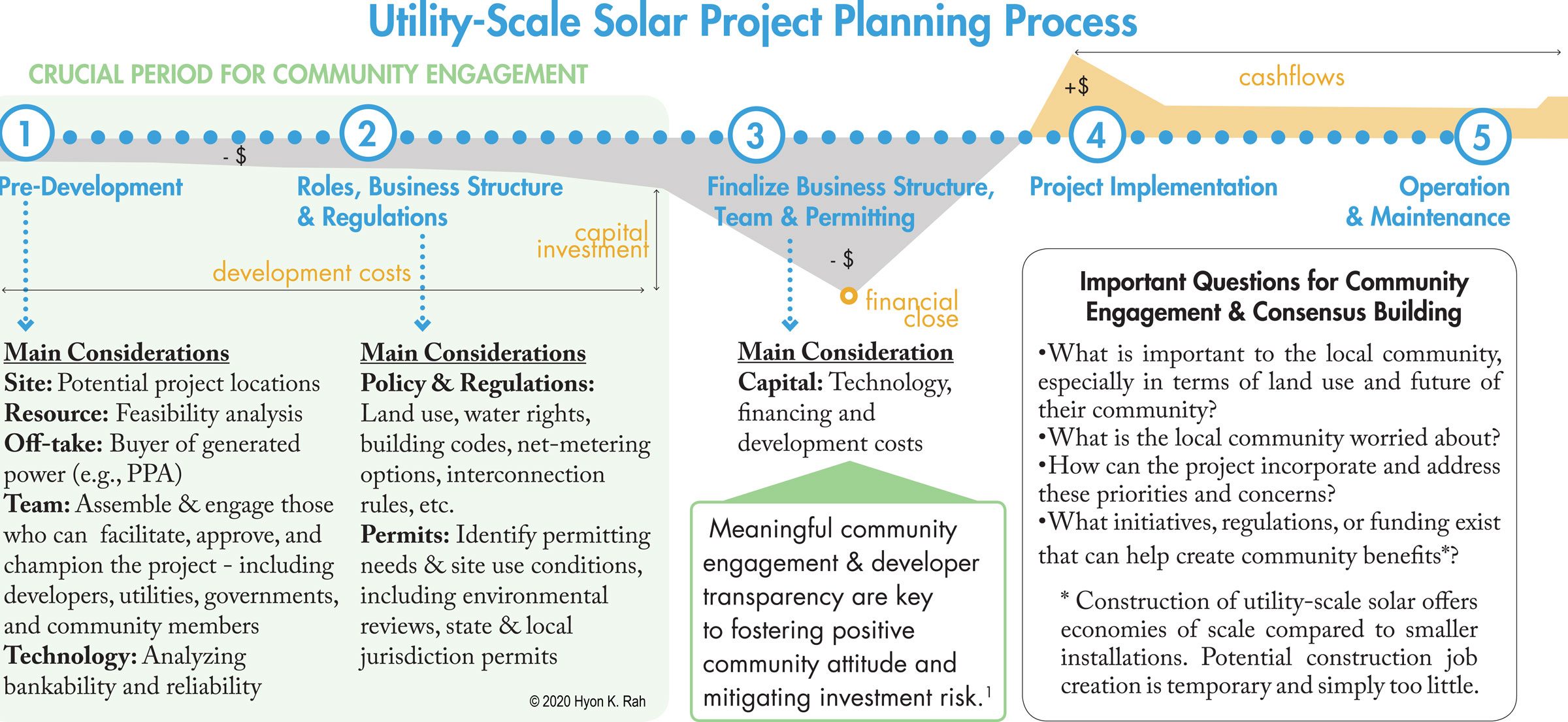Solar 20/20 National Conference - American Solar Energy Society (ASES)
By Hyon K. Rah, July 2020

Solar energy development in the U.S. has been booming in the recent years, thanks to the increasing cost-competitiveness of PV technology and equipment and regulatory reforms. In addition to driving greenhouse gas (GHG) emissions reduction and cost savings, rooftop and community solar developments in cities have been leveraged to create new employment and training opportunities and promote equity.
Unfortunately, the same cannot be said about the larger, utility-scale solar developments, most of which take place in rural areas. While the profitability of utility-scale projects has been evident by the amount of private investments, few of the localities that host them have seen much short or long-term economic benefit as the leading solar cities.
Isolated from each other in practice yet overlapping in the desired turfs of influence, conflicts between utility-scale solar developers and local stakeholders occur more often than not, rarely taking a collaborative and mutually beneficial turn. The negative consequences include financial loss from permit delays or denials for developers, and witnessing their landscapes transform for nothing in return for local community members.
There are ways to turn this gap into an opportunity, cementing utility-scale solar into an anchoring force behind equitable development in rural communities.

1 https://eta-publications.lbl.gov/sites/default/files/firestone_et_al._2017_reconsidering_barriers_to_wind_power_projects.pdf

2 https://dnr.maryland.gov/pprp/Documents/Pollinator_Habitat_Designation.pdf
3 https://www.energy.gov/eere/solar/farmers-guide-going-solar
